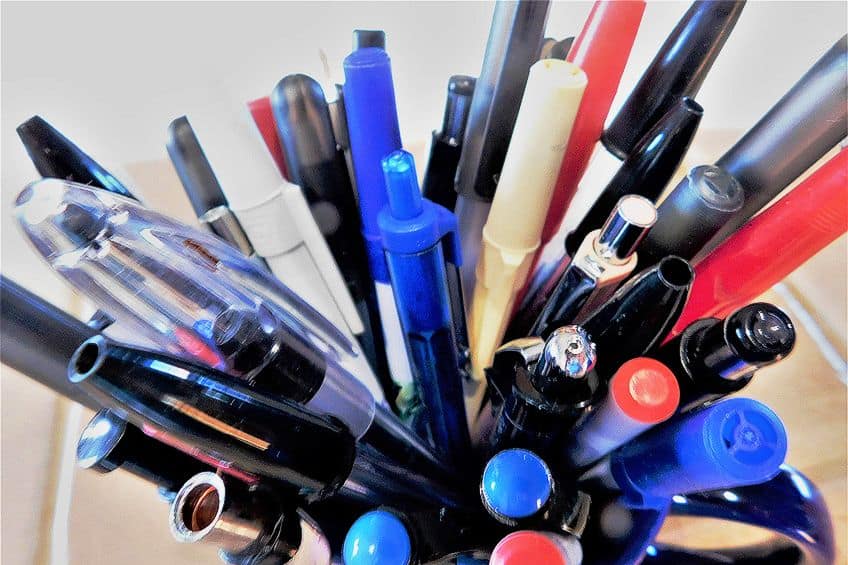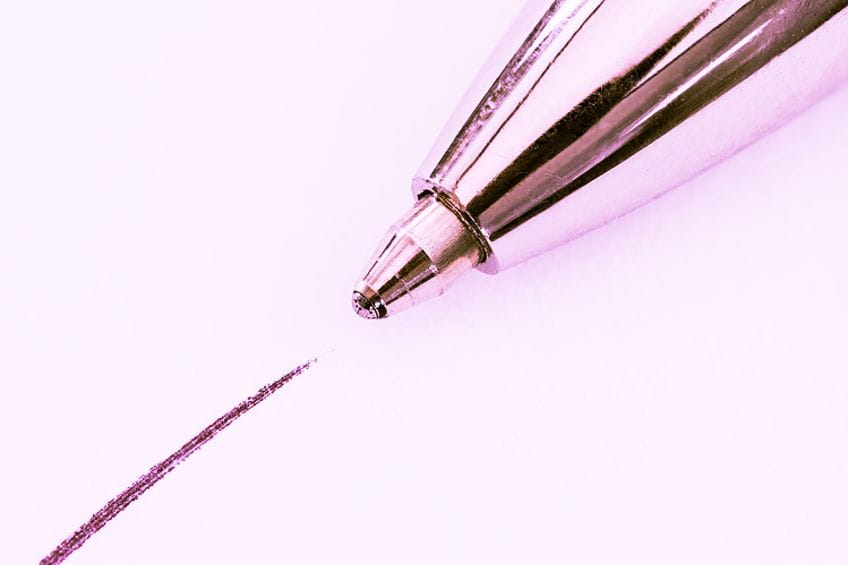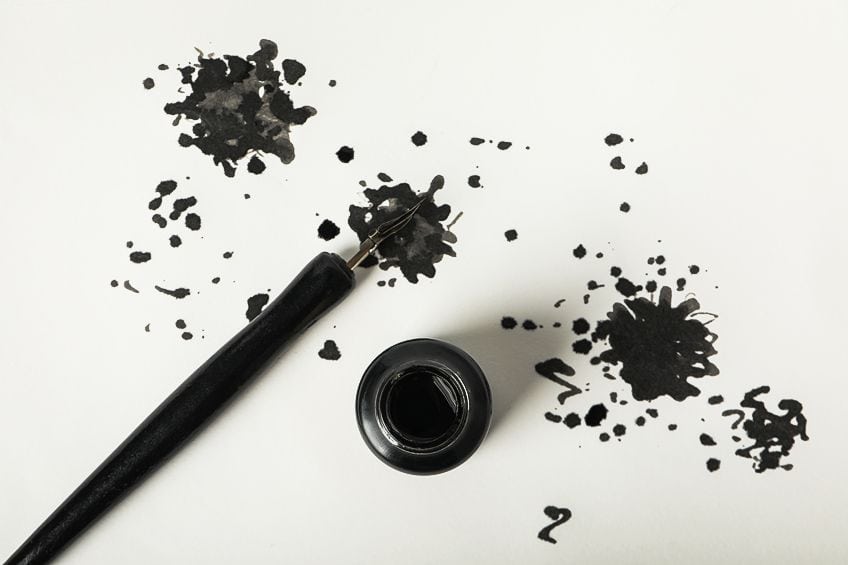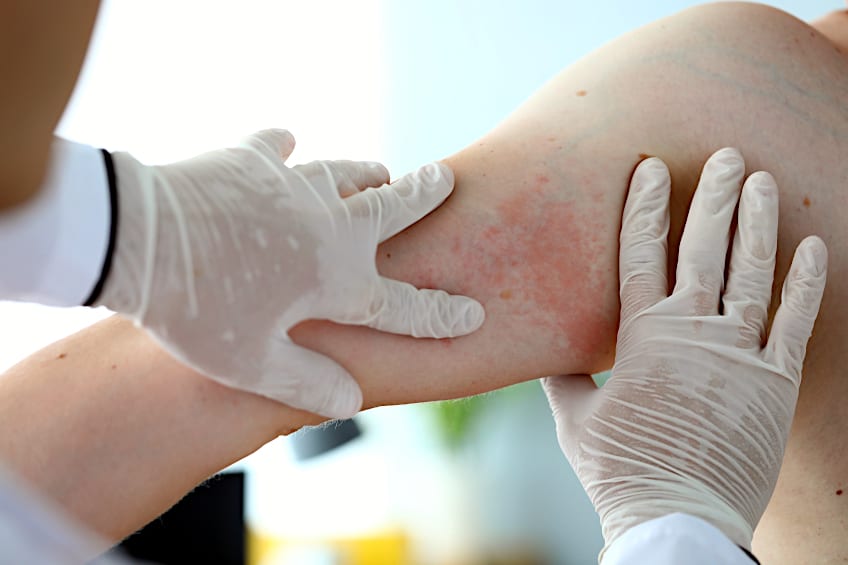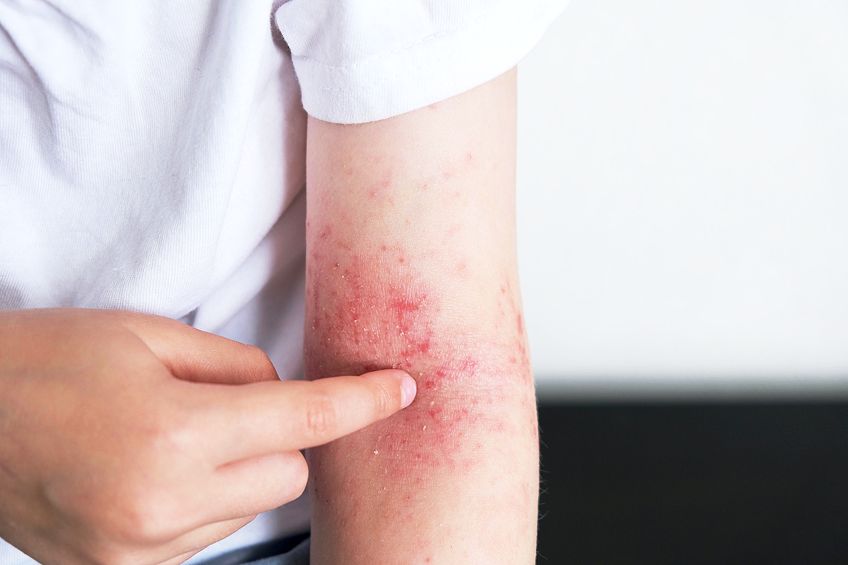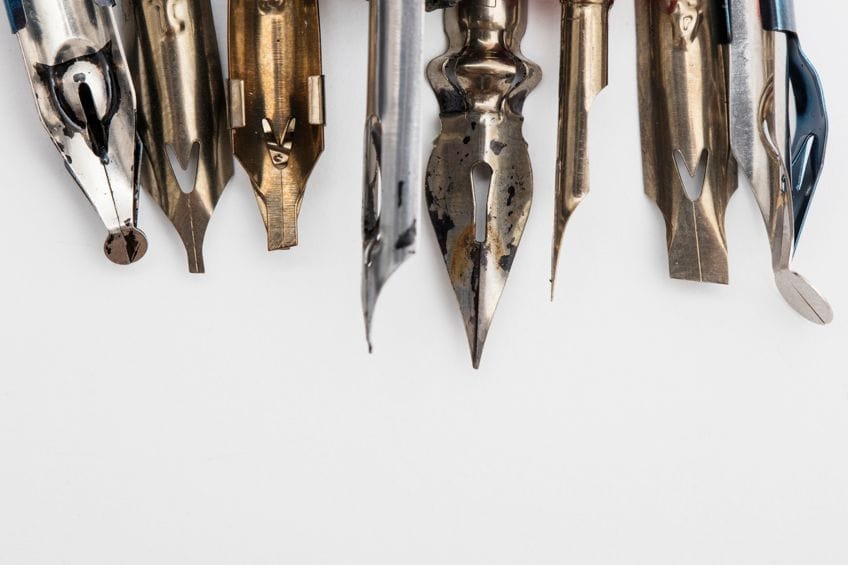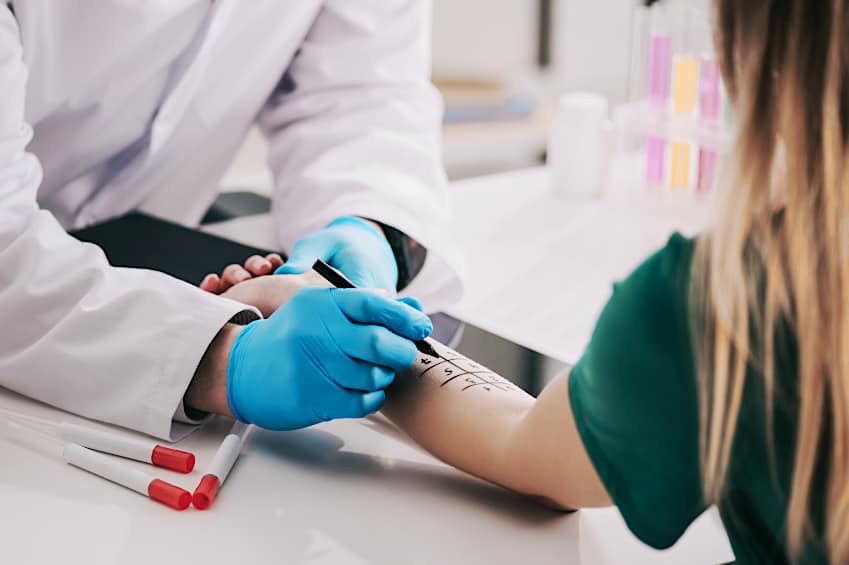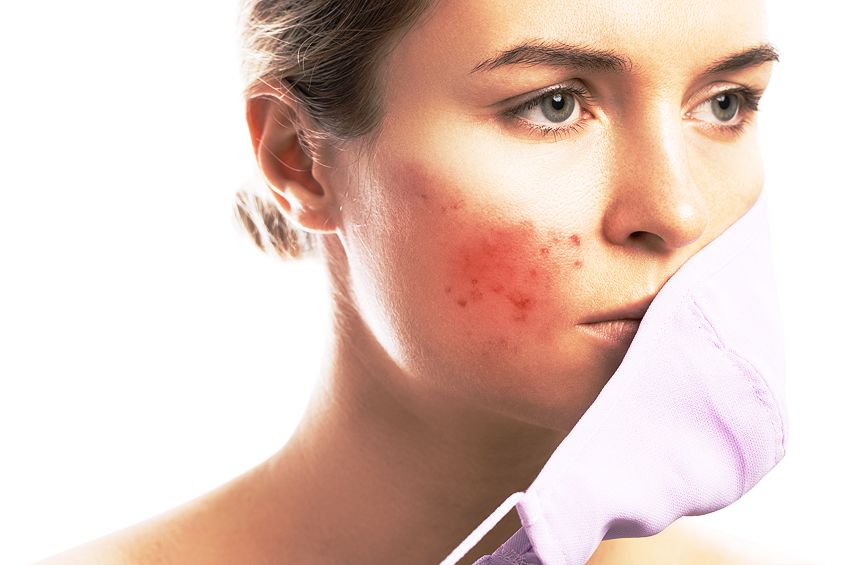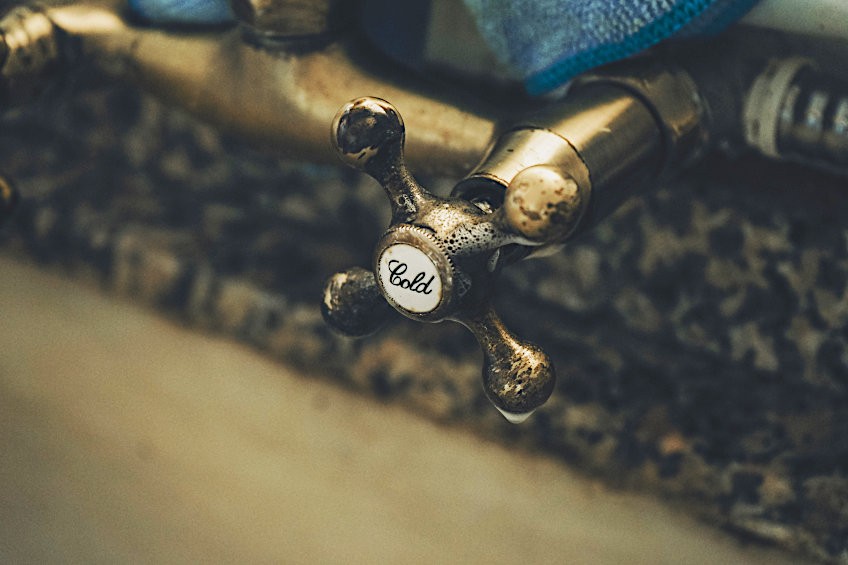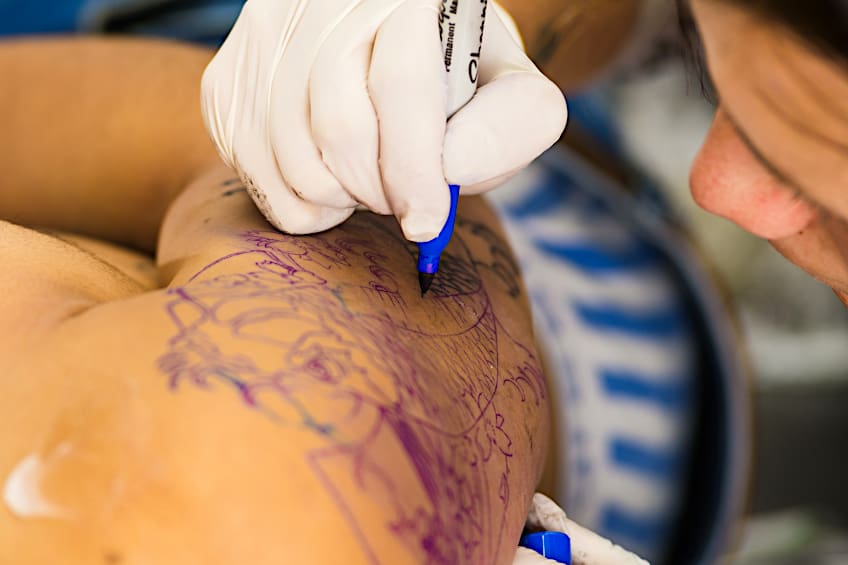Is Pen Ink Bad for Your Skin? – Pen Ink Safety Tips
Is pen ink bad for your skin? We’ve all used pens to make little doodles or notes on our arm at some point. Whether or not pen ink is bad for our skin isn’t something most of us think about, but considering how toxic ink can be if ingested, it’s worth looking at what it does to your skin. With that being said, let’s find out what pen ink is and how it interacts with your skin on contact.
Contents
- 1 What Is Pen Ink?
- 2 Different Types of Pen Ink
- 3 Effects of Pen Ink on the Skin
- 4 Factors That Influence the Effect of Pen Ink on Your Skin
- 5 How to Minimize the Risk Associated With Pen Ink on Your Skin
- 6 What Should You Do If You Experience Skin Problems Due to Pen Ink Use?
- 7 Alternatives to Drawing on Your Skin With Pen
- 8 Frequently Asked Questions
What Is Pen Ink?
There is no standard formula for pen ink. In fact, there are quite literally hundreds of pen ink formulas that are used by different companies in different types of pens, although statistically, the ink inside an average ballpoint pen consists of dye or pigment particles that have been suspended in a vehicle made of oil or water.
The oils used inside ink pens usually contain either phenoxyethanol or benzyl alcohol. These allow your pen to glide over the surface of your page and then quickly dry up to make your marking permanent.
Modern pens and inks have special additives that give their ink distinct characteristics and even keep their formulas as proprietary information to set themselves apart from the competition. Inks can consist of everything from oleic acid, alkyl alkanolamide, and even fatty acids to improve their quality and usability.
Different Types of Pen Ink
As we mentioned previously, there are hundreds of pen ink formulas out there, but they can all (generally) be categorized into one of five categories. To help you understand what these inks contain and how they could potentially affect your skin, we have put together a list of these pen ink categories, what these inks contain, and some of their characteristics.
Ballpoint and Rollerball Pen Ink
Ballpoint pens are the most popular pen type across the globe. Ballpoint pen ink commonly consists of an oil base that has been mixed with pigment or dyes. This ink is known for its fast drying time, and is available in over 100 colors, although some of the most popular colors used in everyday activities are red, blue, and black.
Rollerball pen ink is very much the same as ballpoint pen ink, with the only difference being that while ballpoint pen ink is oil-based, rollerball ink is water-based.
This ink is known for being quite thick, saturating paper and drying slower than ballpoint ink. It is also available in over 100 colors and its most popular colors are red, black, and blue.
Dip and Fountain Pen Ink
Dip ink is what was used in older fountain pens. You would dip your pen’s tip into an ink pot and then process to write. Dip ink is quite thin as it consists of a water base mixed with dye. This ink is almost exclusively available in black and is known to both fade over time and smear quite easily as it does not dry very quickly thanks to it being water-based.
Fountain pen ink is essentially the same as dip ink, being water-based and imbued with dyes to provide color. Fountain pen ink contains surfactants that allow for better control of ink flow. This means that even though the ink still took a long time to dry, it was less likely to smear or leave ink blots on your page.
Gel Pen Ink
Gel pen ink is the latest variation of pen ink. It is quite thick, consisting of a water base mixed with dyes. This ink is very smooth but it is known to smear easily if touched while wet, but considering it is available in over 100 colors with glitter, metallic, and neon stylings, people don’t seem to mind. Gel ink doesn’t get very good coverage either, especially compared to rollerball and ballpoint pen ink.
Effects of Pen Ink on the Skin
If inks are made of all of these different substances, is pen ink bad for your skin? To ensure you know exactly what effects pen ink can have on your skin we have prepared a short list of symptoms you can look out for.
Keep in mind that while the probability of serious harm is minimal, you should consult a medical professional if symptoms persist or intensify intensify.
Skin Irritation
Everyone’s skin is different. How your skin reacts to contact with certain stimuli can vary considerably, so if you experience redness or blotchy skin after using a pen on it, it’s usually a good indicator that you should stop.
Skin irritation tends to be mild and is commonly referred to as dermatographia which can be a result of abrasion to the dermis in combination with pen ink.
Allergic Reaction
Allergic reactions to pen ink aren’t very common, but pen inks do contain substances considered to be allergens by some healthcare professionals. Dyes, solvents, and ink preservatives can cause your skin to have an allergic reaction on contact.
This commonly results in redness, blotchiness, and even full-on rashes, and should be treated immediately if symptoms persist.
Infection Risk
Pen ink was not designed to be used on human skin, so it should come as no surprise that it can cause an infection if it penetrates your skin deep enough. This is uncommon as pen ink has a minimal toxicity level, but it can cause skin to swell and redden in certain cases.
Never use pen ink on open skin or around cuts and seek immediate medical attention if symptoms worsen/persist over time.
Chemical Toxicity
As we mentioned previously, pen ink poses a minimal toxicity risk when used on the skin. However, if pen ink is ingested it can cause a stained tongue and a mildly upset stomach. This can be remedied by ingesting water, but again if symptoms persist you should seek medication attention as soon as possible.
Never ingest pen ink under any circumstances!
Factors That Influence the Effect of Pen Ink on Your Skin
There are many varieties of pen ink, but there are also many factors to consider when assessing the risk it poses to your skin. If you are planning on using pen ink on your skin, which we don’t recommend, we have prepared a list of things you should keep in mind so you can avoid irritating or damaging your skin in the process.
Pen Type
The type of pen you are using can dictate the type of ink you are exposing your skin to. Aside from the ink though, the tip of the pen can influence how the ink is introduced to your skin. Fountain pens have a sharp tip that will raise your skin, allowing ink to enter underneath it, whereas ballpoint and roller tip pens will simply apply the ink to the surface of your arm.
Your Skin Type
As we mentioned previously, everyone’s skin is unique. This means that your reaction to pen ink can vary wildly from someone else’s experience. Sensitive skin types could have a harsh reaction to the solvent and dyes present in some types of ink, whereas those with more robust skin might have no reaction whatsoever.
We don’t recommend trying to find out what your skin type is on your own.
Ink Composition
Is pen ink bad for your skin? Pen Ink can consist of many different elements. Some are oil-based, some are water-based, some contain solvents, and some do not.
Some additives like solvents and binders can act as allergens, and therefore it’s more risky to draw on your skin with some ink types than others.
There are pens that are known to be safe for skin and are routinely used by medical professionals, but when it comes to the pens you buy at your local stationary store, understanding what ink type you are working with will help you determine your risk factor.
Frequency of Use
The more you expose your skin to something like ink, the greater your risk of adverse effects. Using pen ink on the same spot constantly can cause your skin to become discolored over time due to repeated exposure. Therefore, occasional use of a pen on different parts of your body generally shouldn’t present a serious risk, but this depends on your skin type and how your body reacts to the ink.
How to Minimize the Risk Associated With Pen Ink on Your Skin
If you do need to use pen ink on your skin, there are some precautions you can take to ensure no lasting damage is done to it. Here are some things you can try to ensure your skin isn’t damaged, including using ink that doesn’t contain any hazardous substances and ensuring your skin is properly cleaned after ink has been applied.
Cleaning Skin Before and After Use
While pen ink generally isn’t harmful to human skin, taking some precautions can prevent any harmful effects. For example, cleaning your skin beforehand can prevent the ink from acting as a vehicle for existing substances to enter below the surface layer.
Washing skin properly with soap and water can also prevent long-term staining.
You can also use baby-wipes to remove both dirt and natural oils from your skin without leaving behind excess moisture, which may cause the ink to smear.
Using Non-Toxic Ink
Is pen ink bad for your skin even if it’s non-toxic? Well, not really but this does depend on your skin sensitivity. Using inks that don’t contain potentially harmful substances can greatly reduce the probability of having an adverse reaction.
Most pen packaging will state what substances make up its ink, so it’s best to check the labeling if you are going to be using pens on your skin.
Using Skin-Safe Markers
If you do want to draw on your skin, there are actually special pens out there specifically designed to do so. They are usually marketed as kid’s tattoo pens, and since they are nontoxic and can be removed using soap, water, and some elbow grease, you won’t have anything to worry about. These pens are pretty inexpensive too and are available in a wide variety of colors.
Avoiding Excessive Use
Life can get rather busy, and you might need to jot something down on your arm from time to time. There is virtually no risk in doing so as long as the ink is removed in a timely manner, but using pen ink on your skin excessively can cause your skin to become stained, either with the color of the pen ink or slightly yellowed over time.
What Should You Do If You Experience Skin Problems Due to Pen Ink Use?
What happens if you’ve been using pen ink on your skin and you begin to experience serious health problems? This is a rare occurrence, but should you experience any of the following symptoms we highly recommend that you seek out medical help as soon as possible, as failing to do so can result in your conditioning worsening.
Symptoms of Skin Problems
Pen ink will not poison you through your skin, but the signs of an adverse or allergic reaction are obvious. For example, if you begin to experience irritation, redness, or staining on or around the area you have applied the ink this is usually a pretty good indication that you should seek medical attention or visit a dermatologist as soon as possible.
Remember that the only time ink has the possibility of poisoning you is if you have ingested it. In this case, the symptoms you might experience can range from a stained tongue to a mild stomach-ache.
Even if you do experience these symptoms, it hasn’t proven to be life-threatening even though it can be rather uncomfortable.
Seeking Medical Attention
While pen ink is pretty unlikely to cause anything serious enough to send you to the emergency room, this does depend on whether you have any pre-existing skin conditions. Skin that is particularly sensitive, thin, or otherwise compromised could be irritated by allergens inside the ink. In this instance, you might need to seek medical attention.
Emergency rooms are well equipped to treat allergic reactions and intense cases of skin irritation, and since it isn’t life-threatening the only thing to worry about is the immediate discomfort.
Skin irritation caused by pen ink is rarely this intense though, and simply removing the ink and soothing the affected area should do the job.
Home Remedies for Skin Problems
As we mentioned previously, skin irritations caused by pen ink will very rarely (if ever) result in you needing to go to the emergency room. However, if you want to quell the symptoms of skin irritation at home there are a number of home remedies you can try out. The first, and often most effective, is simply to apply a cloth dipped in cold water to the affected area.
If this doesn’t work, you can take an “oatmeal bath”. This consists of blending some oatmeal, throwing it into a hot bath, and taking a soak as It can do wonders for those with sensitive skin.
Other remedies include applying a local anesthetic to the region, or applying a cooling agent like calamine cream.
Alternatives to Drawing on Your Skin With Pen
Since pen ink can cause irritation to your skin, are there any alternatives you can use? Yes! There are many alternatives if you want to decorate your skin. To make things a bit easier for you, and to ensure you don’t suffer from any skin irritation, here are some other tools you can use to decorate your skin in the future.
Fake Tattoo Pens
If you love getting creative on your skin or want to try out a tattoo design, there are dedicated tattoo pens available. These can create long-lasting or easily removable designs that are sure to turn some heads. They are also non-toxic, which means you shouldn’t have a negative reaction to the ink they dispense.
Face Paint
While it isn’t exactly a pen, face paint can be used on the face and on the rest of your body as well. Face paints like the ones meant for kids’ birthday parties are designed to come off easily, so you won’t have much of a problem both applying and removing them.
These are pretty inexpensive too, and you will have a wide range of colors to choose from!
Henna Paste
If you want design freedom and don’t want to deal with ink at all, you could try out some henna paste.
Used to create Mehndi designs in Hindi and Uru cultures, it allows you to create intricate designs on your skin and the pastes are available in a variety of colors! Henna painting can take a bit of practice to get the hang of it.
Keep in mind that some people are allergic to henna and may end up with painful rash. In some cases, infected henna rashes have resulted in permanent scarring, so always test any product on a small area of skin before use.
Temporary Tattoos
If you don’t have the time or inclination to create a design yourself, you could try simply buying a temporary tattoo instead. They are usually inexpensive, and they are sold in packs! This means you have multiple designs to choose from and they last for a few washes (if you aren’t scrubbing it off) These are non-toxic and are sold both in-store and online.
Is pen ink bad for your skin then? Not really, but just because modern pen ink is non-toxic, it doesn’t mean you should go around using it on your skin constantly. We recommend sticking to inks that have been specifically designed for use on human skin to avoid any adverse effects, and to avoid marking yourself with ink that could be difficult to remove.
Frequently Asked Questions
What Type of Ink Is Pen Ink?
Pen ink is usually water-based or oil-based. There are modern pens that use gel-based ink too, but any substance capable of delivering the dye to a page and is minimally toxic can be used inside pens and markers. Older pens almost exclusively used water-based ink, but these were far more challenging to use when compared to modern pens.
What Happens If Pen Ink Gets Into Your Bloodstream?
While writing on your skin with a pen shouldn’t cause anything other than irritation, having ink enter your bloodstream can cause poisoning. Once in your bloodstream, ink can travel to other parts of your body quickly, which can seriously harm your organs. If you ingested pen ink, you should seek emergency medical assistance immediately.
How Do You Remove Pen Ink from Your Mouth?
Pen ink can easily be removed from your mouth. All you need to do is gargle with water repeatedly until the ink is removed. However, if you have ingested a large amount of pen ink, you should seek emergency medical attention immediately. If you have not ingested pen ink and simply got a little in your mouth, you should be fine, but if you experience persistent negative symptoms you should definitely seek immediate medical attention.
Jordan Anthony is a Cape Town-based film photographer, curator, and arts writer. She holds a Bachelor of Art in Fine Arts from the University of the Witwatersrand, Johannesburg, where she explored themes like healing, identity, dreams, and intuitive creation in her Contemporary art practice. Jordan has collaborated with various local art institutions, including the KZNSA Gallery in Durban, the Turbine Art Fair, and the Wits Art Museum. Her photography focuses on abstract color manipulations, portraiture, candid shots, and urban landscapes. She’s intrigued by philosophy, memory, and esotericism, drawing inspiration from Surrealism, Fluxus, and ancient civilizations, as well as childhood influences and found objects. Jordan is working for artfilemagazine since 2022 and writes blog posts about art history and photography.
Learn more about Jordan Anthony and about us.
Cite this Article
Jordan, Anthony, “Is Pen Ink Bad for Your Skin? – Pen Ink Safety Tips.” artfilemagazine – Your Online Art Source. November 22, 2023. URL: https://artfilemagazine.com/is-pen-ink-bad-for-your-skin/
Anthony, J. (2023, 22 November). Is Pen Ink Bad for Your Skin? – Pen Ink Safety Tips. artfilemagazine – Your Online Art Source. https://artfilemagazine.com/is-pen-ink-bad-for-your-skin/
Anthony, Jordan. “Is Pen Ink Bad for Your Skin? – Pen Ink Safety Tips.” artfilemagazine – Your Online Art Source, November 22, 2023. https://artfilemagazine.com/is-pen-ink-bad-for-your-skin/.



